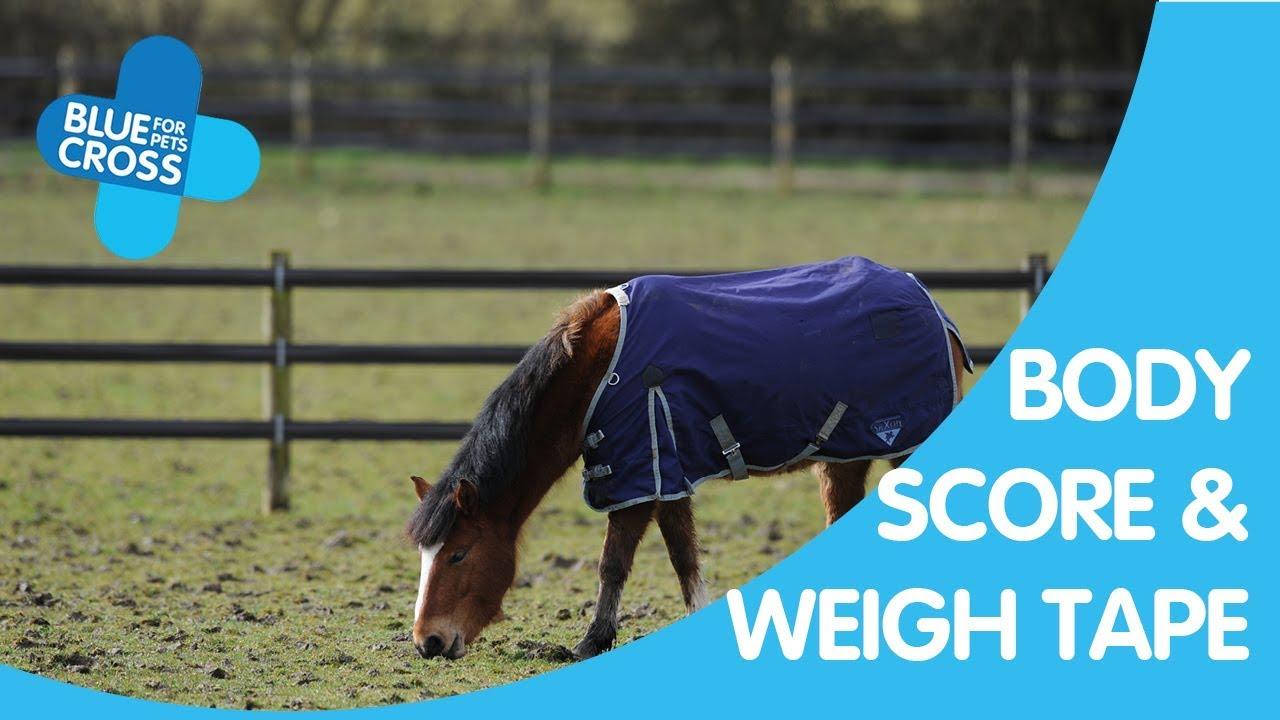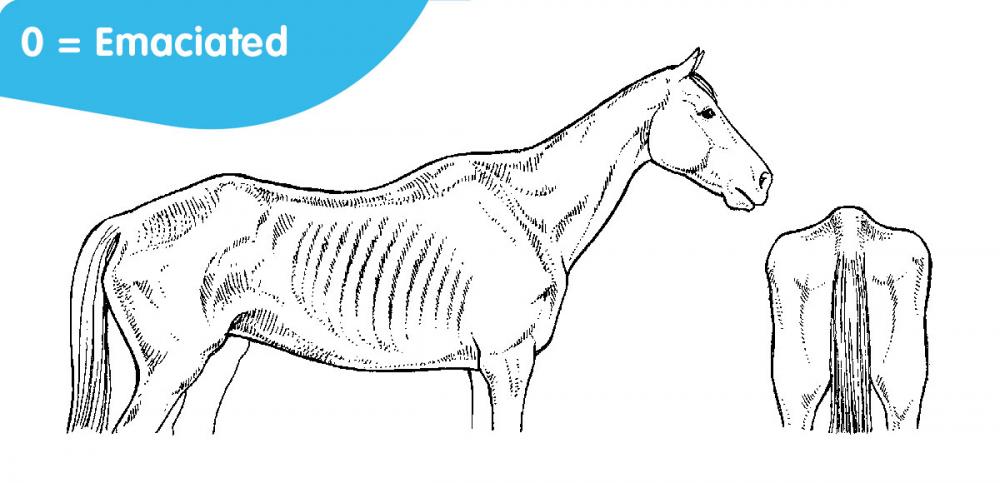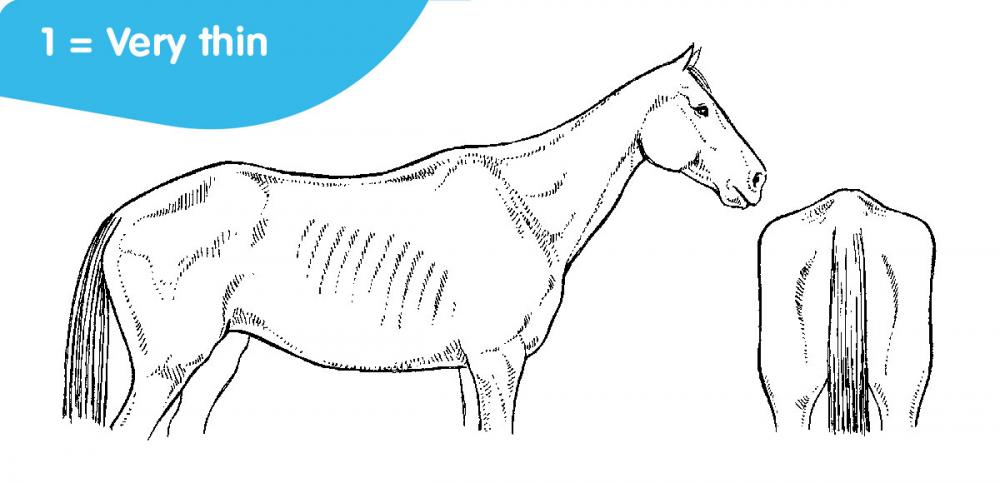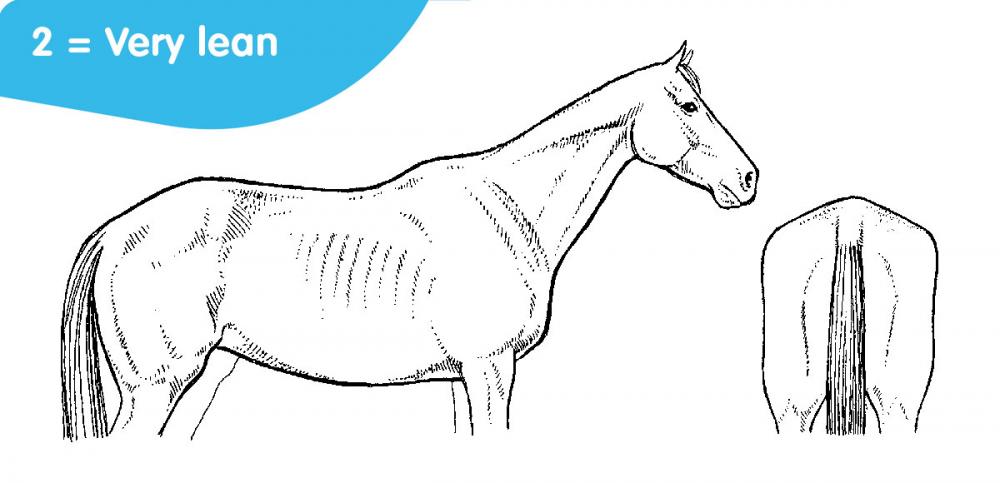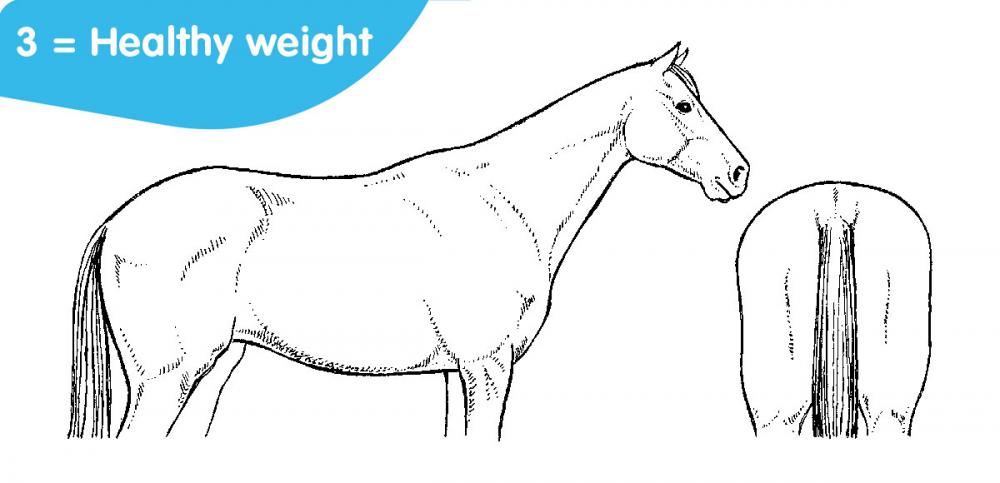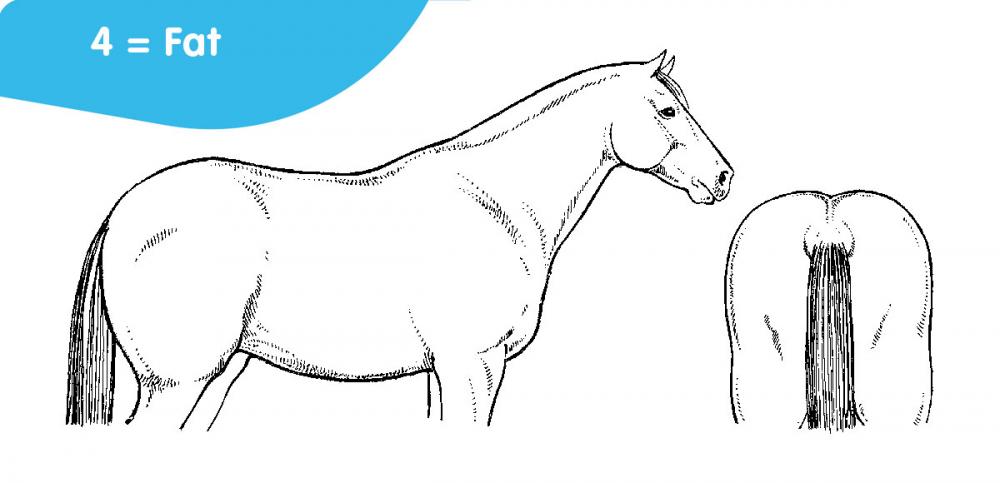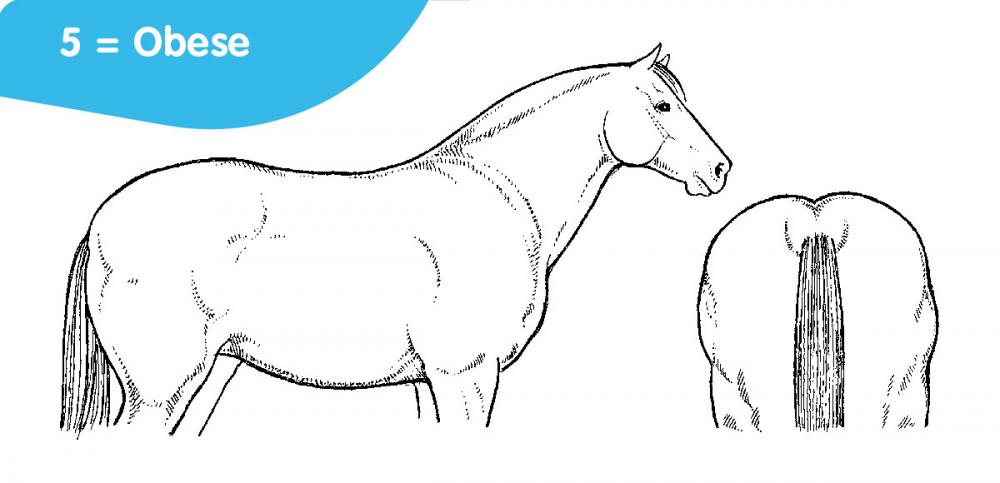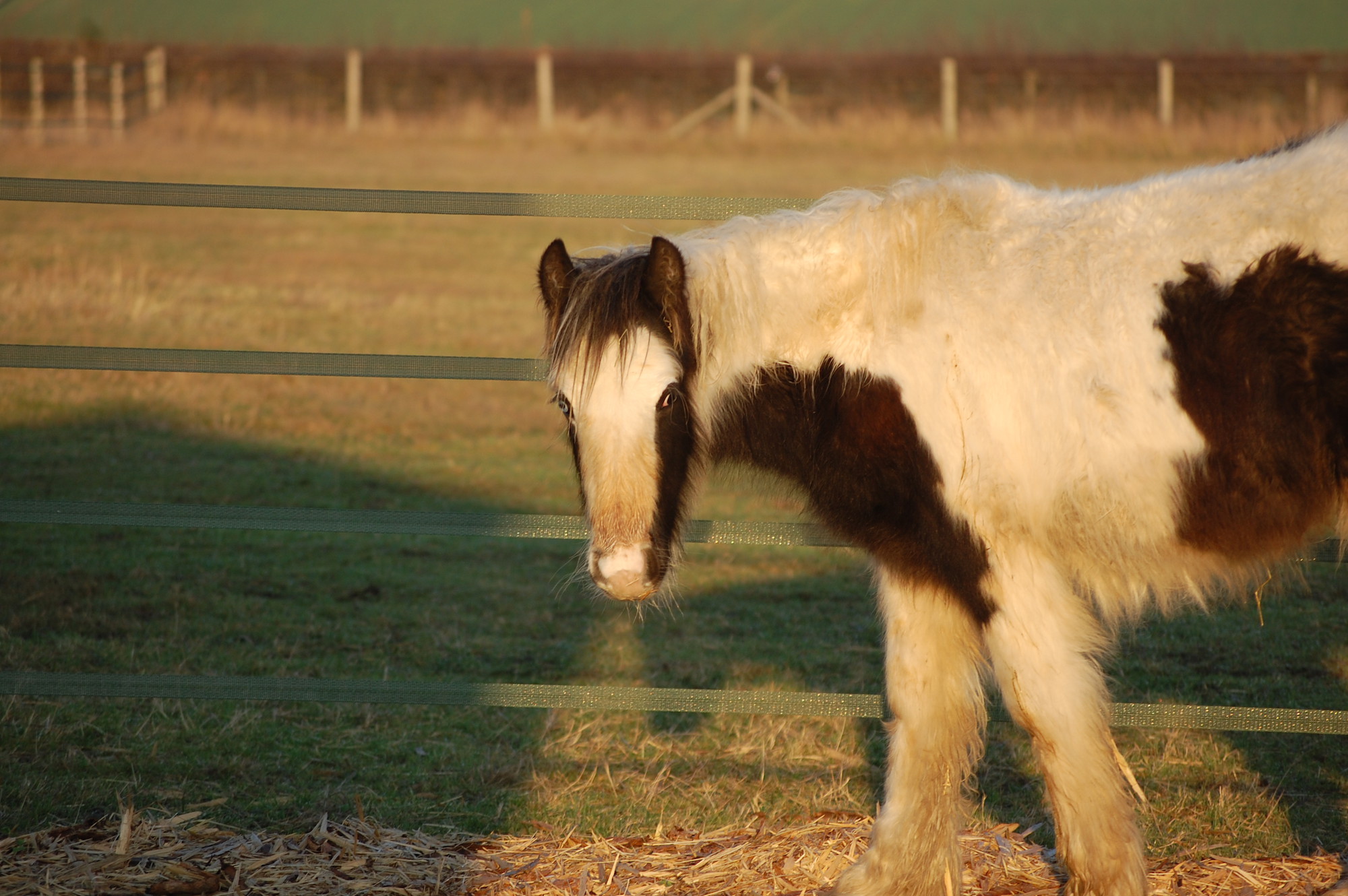
How to body score your horse
Body scoring your horse can help you to determine if your horse is a healthy weight.
Body condition scoring – also known as fat scoring – is an objective way to identify if a horse is a healthy weight. Body scoring looks at their fat covering in three sections – the neck, the middle and the hindquarters. The most common system used is where a horse is given an overall body score from zero (emaciated) to five (obese).
Note
You should keep track of your horse's weight by body scoring them every two weeks in combination with using a weight tape. Remember to use the same brand of weight tape each time to keep your recordings consistent.
Body condition scoring a horse
You do not need any equipment to body score your horse. Using your hands, you'll feel for deposits of fat – muscle will feel firm and does not count towards the score.
Body scoring can be broken down into three steps:
1. Neck and shoulders
Run your hands along the crest of the neck, checking whether you can move it from side to side. The nuchal ligament runs along the top of the neck (from the poll to the withers), and feels like a tube. Anything above this is fat. Thickened, hard crest fat is dangerous to equine health – it may be an indication of metabolic problems, as well as high risk of laminitis.
Run your hand down the side of the horse's neck, from the head to the shoulder. You should feel for fat pads in front of the shoulder blade. The shoulder blade should be clearly defined, stopping your hand from moving smoothly over it. Fat may appear in the hollow in front of the shoulder and build up a pad behind the shoulder.
2. Middle
When you run your hands over the ribcage, you should be able to feel the ribs with only light pressure. The ribs should be just visible to the eye.
On the withers and backbone you should feel the bones underneath a supple layer of skin. There should be barely any fat here, giving your hand a curve shape as it follows the backbone. Fat in this area will build up on either side of the spine, creating a ‘gutter’. If the horse is fat, your hand will lie flat on the horse’s back. If the horse is too thin, your hand will create a triangle shape.
3. Hindquarters
The point of the hips and the croup should be visible to the eye, but should not be sticking out prominently. The point of the hip should also be easy to feel. The quarters should then slope down away from the croup in a slightly rounded shape. A ‘gutter’ along the backbone with an apple-shaped bottom indicates too much fat.
Horse body score chart
As you feel your way along each section, use the chart and descriptions below to objectively score your horse. Many horses carry their fat unevenly on their bodies, so you will often have to average the scores of the different areas.
0 = Emaciated
- No fat can be felt with skin pulled tight over bones
- Very thin neck with little muscle and no fat along the top – visible ewe neck (a neck that concaves instead of arches)
- Individual bones are visible to the eye
- Prominent backbone, pelvis and tailbone
- Sunken hindquarters
- Large gap between the thighs
1 = Very thin
- Barely any fat can be felt
- Narrow ewe neck with very little muscle and fat along the top
- Shape of bones visible to the eye – ribs can be seen and felt
- Prominent backbone, croup and tail head
- Sunken hindquarters
- Gap between thighs
2 = Very lean
- Very thin layer of fat can be felt
- Narrow neck with sharply defined muscles
- Ribs are just visible and can be felt
- Backbone can be felt
- Hip bones are easily visible but covered by a thin layer of fat
- Hindquarters are sloping from the backbone to point of hips, and are only rounded if the horse is fit
3 = Healthy
- Thin layer of fat can be felt
- Muscles on neck are less defined with no crest on top
- Ribs are not visible but are easily felt
- Backbone is covered by fat but can still be felt
- Hindquarters are beginning to appear rounded
- Hip bones are slightly visible but easily felt
4 = Fat
- Muscles are hard to determine
- Spongy fat developing along the neck
- Fat can be seen and felt behind the shoulder
- Ribs, pelvis and hips are difficult to feel
- Hindquarters are rounded with spongy fat around the tail head
- A gutter can be seen along the backbone and hindquarters
5 = Obese
- Visible pads of fat with no visible muscles
- Large amount of hard fat on the neck (also known as cresty neck)
- Ribs and hips cannot be felt
- Deep gutter along the backbone and hindquarters
- Lumps of fat around the tail head
- Very bulging apple-shaped hindquarters
- Inner thighs are pressing together
Calculating the body score
Since each horse carries their fat differently, they may not match just one category. Instead, after scoring each section, you'll need to work out the average overall score. You can use the formula below to do this:
(Total sum of all scores) ÷ 3 = overall score
For example, a horse that scores three on the neck, four on the middle and two on the hindquarters will have an overall body score of three. However, you should stay alert to areas of four or above, as this can still put your horse at high risk.
What is the ideal body score for a horse?
A healthy body score for most leisure horses is around two and a half to three and a half. This range allows for seasonal changes as many horses lose weight in winter and gain it back in the summer. A score higher than four puts your horse at risk of becoming obese.
Horse body scoring chart
Type: pdf / Size: 141.55 KBPage details
Reviewed
• 26 June 2023
Next review
• 26 June 2026

